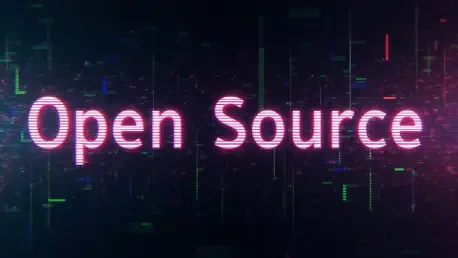The Open Invention Network (OIN) has marked two decades of shielding Linux and open-source technologies from patent threats. This achievement underscores its pivotal role in fostering a protective environment for the open-source community amidst evolving challenges. Its inception in the mid-2000s came during a period of heightened vulnerability for Linux, driven by legal threats from significant industry figures such as SCO and Microsoft, which illuminated the urgent need for a protective coalition. Understanding these circumstances provides insight into OIN’s mission over the past two decades: to ensure open-source innovations can flourish unimpeded by patent litigation risks that once threatened their very existence.
Foundational Journey
Forming the Protective Alliance
OIN emerged as an answer to the increasing threat from Patent Assertion Entities (PAEs) that targeted open-source projects. Key players in the tech industry, including IBM, Novell, Philips, Red Hat, and Sony, united to establish a protective alliance in 2005. The formation of OIN was a strategic move designed to create a bulwark against legal assertions that could cripple the open-source community. These founding companies recognized that collaboration, rather than confrontation, was essential for fostering open innovation. By committing significant resources and collective influence, they embarked on a journey to construct a shared security framework against disruptive patent threats.
This initiative quickly evolved from a foundational idea into a formidable global alliance. In today’s landscape, more than 4,000 participants encompassing startups, large corporations, and individual developers have joined the OIN network. This robust community collectively holds over three million patents and patent applications, reflecting the strong, communal spirit of safeguarding open-source technologies. Enabling this extensive participation is a testament to the organization’s effectiveness in uniting diverse stakeholders toward a common goal—maintaining an open and innovative technological ecosystem.
Royalty-Free Cross-Licensing
At the heart of OIN’s strategy lies its innovative approach to royalty-free cross-licensing. Members of the network agree not to initiate patent claims related to the Linux ecosystem, creating an atmosphere of mutual trust and cooperation. This strategic framework has proven instrumental in maintaining legal peace and discouraging unnecessary litigation, fostering an environment where innovation can flourish. By promoting cooperation over competition, OIN ensures that technological advancements are protected and accessible to developers and users alike.
This model serves as a catalyst for open-source innovation by eliminating barriers that patent concerns could otherwise impose. The cross-licensing strategy not only safeguards existing technologies but also encourages members to freely explore and develop new ideas within a legally secure context. As a result, this approach strengthens technology adoption across various industries, as organizations are more willing to invest in open-source solutions when assured of patent safety. Such an environment not only enhances individual company growth but also contributes to broader technological advancements.
Expanding Influence
Broad Scope and Corporate Turnaround
Beyond its initial focus on Linux, OIN has broadened its protective reach to include a wide spectrum of open-source technologies. Significantly, Microsoft’s pivot from a Linux adversary to an OIN participant in 2018 marked a substantial industry shift towards embracing open-source collaboration. By joining OIN, Microsoft made headlines by contributing its vast portfolio of 60,000 patents, signaling a profound change in its business approach and recognition of the strategic benefits open-source models offer. This shift illustrated not only Microsoft’s evolution but also the changing perception of open-source software as a vital driver of innovation.
Microsoft’s engagement with OIN underscores the realization that fostering open-source technology is integral to maintaining competitiveness in the evolving tech landscape. As more companies recognize the value of shared innovation, they are increasingly willing to contribute to collective initiatives such as OIN. This broadening scope reflects a wider industry acknowledgment that cooperation in open-source domains can lead to unexpected, synergistic advances across various technological frontiers, bolstering the open-source ethos of collaboration over conflict.
Comprehensive Open-Source Protection
OIN’s expansive scope now covers over 4,500 software components and platforms, demonstrating its commitment to comprehensive open-source protection. The organization’s Linux System Definition has evolved to encapsulate critical technologies like Android, Apache, and Kubernetes, ensuring that the protective net extends well beyond core Linux systems. This broadened focus protects diverse sectors such as finance, telecommunications, and artificial intelligence, reinforcing OIN’s role as a bulwark against potential patent disputes in these critical areas.
By continually adapting its protection strategies to include emerging technologies, OIN ensures that participants are shielded as they navigate new fields of innovation. This proactive approach not only secures existing advancements but also empowers developers to push the boundaries of what is achievable with open-source resources. As a result, industry participants can proceed with confidence, knowing they have a partner in OIN that is actively safeguarding their contributions to the open-source ecosystem—a critical reassurance in ensuring continuous technological advancements.
Defensive Strategies and Industry Impact
Proactive Defense Measures
OIN’s proactive measures extend beyond its licensing strategies, engaging a suite of defensive tactics designed to neutralize patent threats effectively. These actions include collecting prior art, invalidation analysis, and even ex parte reexamination procedures. Such efforts bolster the community’s defenses by preemptively addressing potential patent litigation issues. A prominent example of this strategy in action was OIN’s support for the GNOME Foundation, leading to the dismissal of a lawsuit from a known patent troll, Rothschild Patent Imaging.
This strategic backing illustrates OIN’s commitment to defending open-source projects from unwarranted legal challenges, ensuring developers can continue their work without the looming threat of litigation. By underpinning efforts to disprove weak or invalid patent claims, OIN supports a more stable and secure environment for innovation. These defensive strategies not only preserve the integrity of current projects but also lay the groundwork for future technological development within a legally protected sphere.
Collaborative Efforts and Industry Praise
OIN’s collaboration with other major entities is key to its widespread impact. In 2019, the organization joined forces with IBM, Microsoft, and the Linux Foundation to launch the Open Source Zone initiative under Unified Patents. This ambitious project aimed to combat patent trolls by contesting the legitimacy of their claims. Such collaborative ventures have proven successful, reflecting the unified commitment of industry leaders to protect the integrity of open-source innovation against exploitative practices.
Esteemed industry figures have lauded OIN for its relentless dedication to safeguarding open-source technologies, attributing the progress made in various tech domains to its efforts. Jim Zemlin of the Linux Foundation acknowledged OIN’s crucial role in protecting core technology infrastructures that encourage companies to innovate freely. Similarly, Red Hat’s CTO Chris Wright recognized OIN’s influence in driving advances within fields such as cloud computing and AI. Google’s Anne Bertucio highlighted OIN’s contributions to fostering an open and cooperative tech development culture, further reinforcing its importance as a defender of open-source values.
Future Prospects
Emerging Industry Frontiers
As the technological landscape evolves, OIN is poised to extend its protective mandate across new and emerging fields. The rise of AI security, automotive technology advancements, and energy solutions underscore the need for continuous adaptation in defensive strategies. OIN’s plans to expand its protection into these areas reflect an understanding of the critical role open-source technologies play in shaping the digital economy of tomorrow, ensuring that innovation is supported, secured, and encouraged to flourish.
This forward-looking approach not only addresses the immediate challenges but also anticipates the shifting demands of the industry, positioning OIN as a proactive leader in managing the future trajectory of open-source developments. By anticipating and responding to these emerging fields, OIN is well-prepared to continue its legacy of defending essential technological progress, facilitating industry-wide growth, and maintaining the ethos of free and open innovation.
OIN’s Legacy of Innovation Advocacy
The Open Invention Network (OIN) has celebrated 20 years of safeguarding Linux and open-source technologies from the threat of patents. This milestone highlights its essential role in nurturing a secure setting for the open-source community amidst evolving challenges. OIN was founded in the mid-2000s during a time when Linux faced significant vulnerabilities, primarily due to legal threats posed by major industry players like SCO and Microsoft, pointing to an urgent need for a protective alliance. By recognizing these circumstances, one can understand OIN’s mission over the past two decades: to ensure that open-source advancements can thrive without the fear of patent litigation, which once posed a serious threat to their existence. OIN’s impact has been profound, as it has created a supportive ecosystem allowing developers to innovate freely. They have assembled a wide network of partners who share the vision of maintaining Linux’s viability and ensuring open-source technologies are developed without hindrance.









